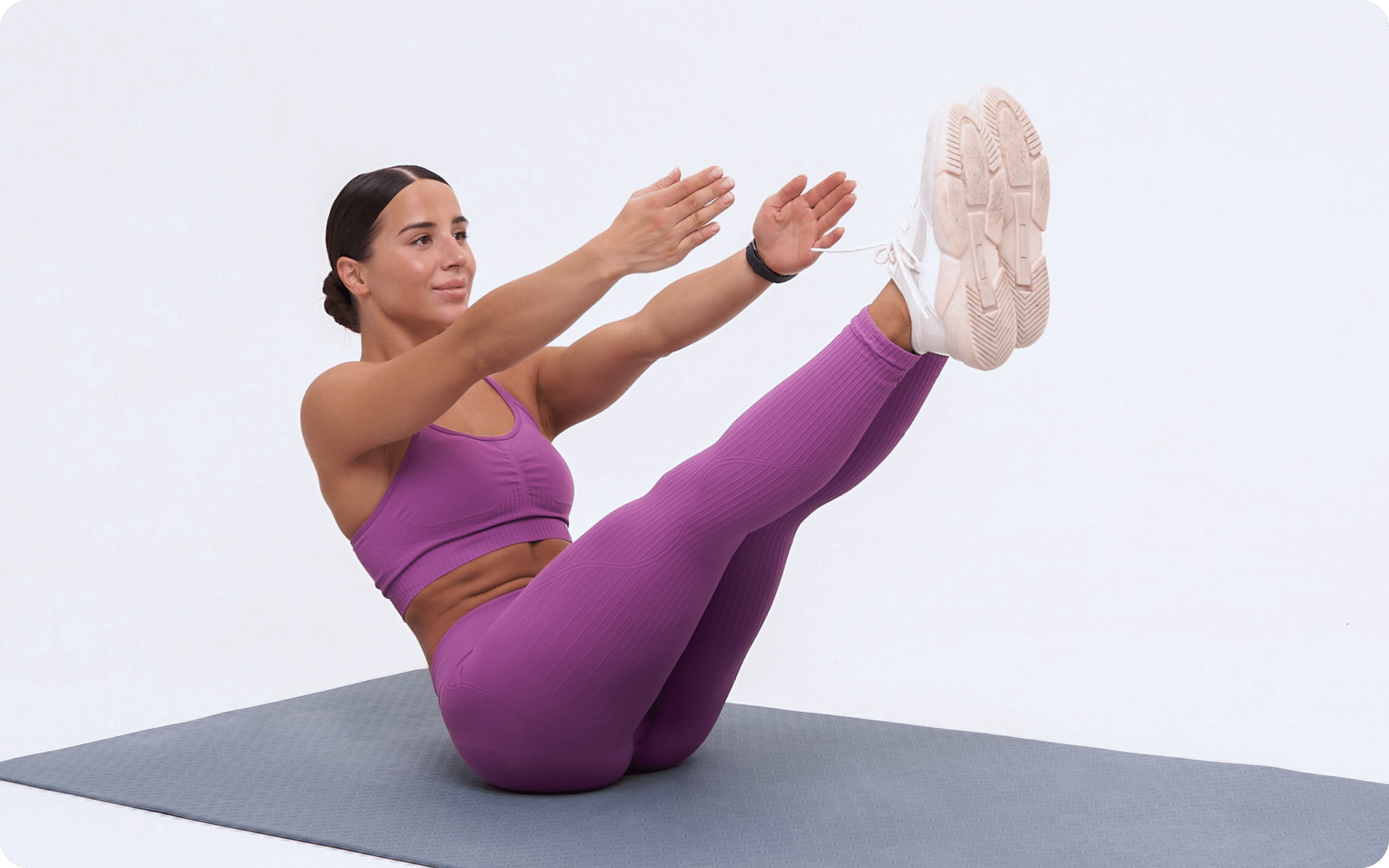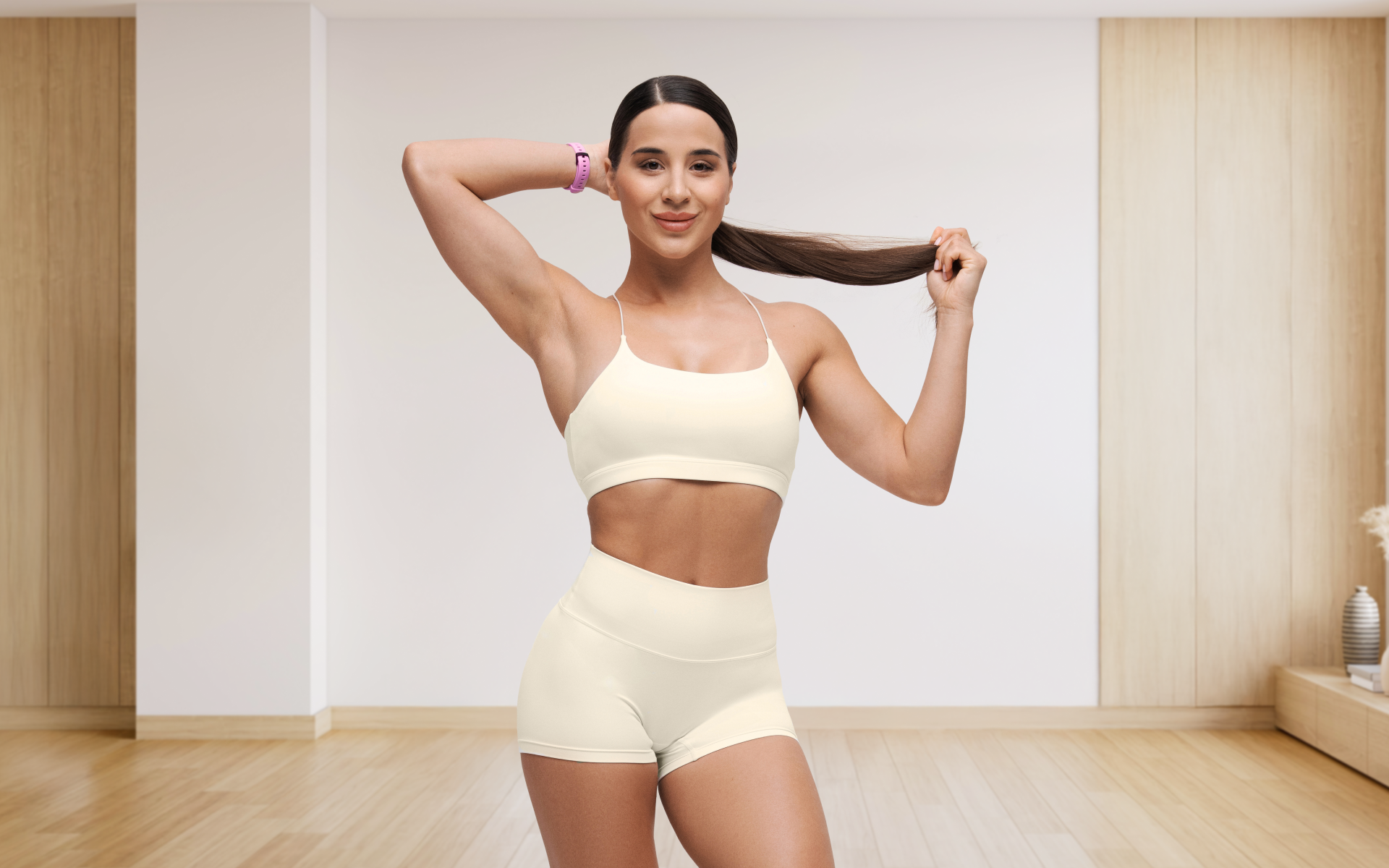Many years since Joseph Pilates introduced his namesake exercise methodology to the world, there’s no shortage of variations to accommodate different needs and preferences.
From Reformer Pilates, which caters to those seeking dynamic resistance, to Power Pilates, which caters to a high-intensity workout regimen; and even Aqua Pilates, for those looking to spice up their water routine, there’s likely a practice suitable for you.
Wall Pilates is high up there among the adaptations—an illustrious blend of traditional principles and resistance training. This Pilates style is all about leveraging a wall to deliver exceptional resistance and stability training.
You may wonder whether or not Wall Pilates holds an edge over traditional forms, or if it’s more of a niche novelty. To help you decide, here’s what you need to know.
Is Wall Pilates Better Than Floor Pilates?
Wall Pilates isn’t better or worse than traditional Pilates. Instead, it’s a unique variation that offers its own set of benefits. Floor Pilates and Wall Pilates both follow the same principles of mind-body connection, control, precision, centering, breathing, and flow. However, the addition of a wall in Wall Pilates offers some distinct advantages.
Increased Resistance
Resistance, in the context of Pilates, is resistance against gravity. In traditional mat Pilates, your body weight provides the resistance. However, with Wall Pilates, the wall acts as an external force that adds to the challenge and intensity of each movement.
This increased resistance translates into a more challenging workout that builds strength and muscle endurance. It also helps improve coordination and balance, as you have to engage your core and stabilizer muscles to stay in control (5) (1).
Enhanced Stability
In traditional Pilates, stability is mainly achieved through proper body alignment and activation of the core muscles. However, with Wall Pilates, the wall adds an extra element of stability training by providing a fixed point for your body to anchor against (5) (1).
This added stability allows you to focus on your form and movement, without worrying about losing balance or falling over. It also helps target specific muscle groups more effectively, leading to better results.
Variety of Exercises
While traditional Pilates can be done on a mat, with props, or using specialized equipment like the Reformer, Wall Pilates adds another dimension to the variety of exercises available. The wall can be used for a wide range of movements, including standing and balancing exercises, making the workout more dynamic and engaging.
In addition, Wall Pilates can also incorporate elements of traditional Pilates, such as using small equipment like resistance bands or balls, while incorporating the wall. This allows for endless possibilities and variations in your workouts.
Accessibility
One of the biggest advantages of Wall Pilates is that it can be easily done at home, with minimal equipment. All you need is a sturdy wall and possibly some resistance bands or small props, making it a convenient option for those who prefer working out at home.
Additionally, Wall Pilates is also suitable for people of all fitness levels, as the intensity and difficulty can be adjusted by changing the position of your body or using different equipment.
If you wish to cinch your waist, tone up your bat wings, blast away the muffin top – our fitness app was created to cater to all your needs! BetterMe won’t give excess weight a chance!
Is Wall Pilates Really Effective?
Wall Pilates is effective for building strength, improving stability and balance, and increasing overall body awareness. It offers a challenging full-body workout that can be tailored to suit individual needs and fitness goals.
- Building strength – The added resistance in Wall Pilates helps build muscle strength and endurance, especially in the core, arms, and legs. This can lead to leaner and toned muscles (1).
- Improving stability – The wall provides a stable foundation for your body, allowing you to focus on proper form and movement, without fear of falling or losing balance. This can improve overall balance and coordination (3).
- Increasing body awareness – By engaging and activating specific muscle groups, Wall Pilates can increase body awareness and mindfulness (3). This translates into better posture, alignment, and movement patterns.
We go into more detail about the effectiveness of this type of exercise in our blog: Does Wall Pilates Work?
Does Wall Pilates Work for Weight Loss?
Wall Pilates can be a great form of exercise for overall fitness and toning, but it may not necessarily lead to any significant weight loss on its own.
Weight loss is the result of a caloric deficit, which means burning more calories than you consume (4). While performing the best wall Pilates exercises, you may not be burning a high number of calories, compared to higher intensity workouts like cardio or weightlifting.
However, incorporating Wall Pilates into your overall fitness routine can increase muscle strength and improve metabolism, ultimately aiding in weight loss.
Wall Pilates vs Pilates for Weight Loss
Neither Wall Pilates nor Pilates burn a significant amount of calories on their own to be considered a primary choice for weight loss. However, both can be part of an overall fitness routine that includes other forms of exercise and healthy eating habits.
Pilates, in general, helps build muscle strength and mass, which can increase metabolism and aid in weight loss (2). Wall Pilates adds an extra element of resistance to this, and may equally be a great option for those looking to tone and strengthen their body, while also incorporating other forms of exercise for weight loss.
Does The 28 Day Wall Pilates Challenge Really Work?
The 28 day wall Pilates challenge is a great way to establish a consistent workout routine and commit to improving your fitness level. However, like with any exercise program, the results may vary depending on individual effort and consistency.
This challenge incorporates different variations of Wall Pilates exercises and gradually increases in difficulty over 28 days. The idea is by having a structured plan and increasing the intensity gradually, you’ll be more likely to commit and see results.
While there may not be a guarantee that you will see dramatic changes in your body after 28 days, committing to the challenge and incorporating Wall Pilates into your routine will certainly lead to noticeable improvements over time.
Our guide on Types of Pilates has more information on the different ways you might incorporate Pilates into your fitness routine.
Can You Do Wall Pilates Every Day?
You can practice wall Pilates up to 4 times a week, depending on your fitness level and goals. Like any workout, it’s essential to give your body adequate rest and recovery time to avoid overtraining and injury.
Also, listening to your body and modifying or taking breaks when needed is crucial in maintaining a safe and effective practice.
If you’re new to Pilates or Wall Pilates specifically, starting slow with 1-2 sessions a week and gradually increasing to 3-4 times a week is recommended. Consult with a certified Pilates instructor for personalized advice on the frequency and intensity of Wall Pilates workouts.
Read more: Wall Pilates for Butt: A Quick Guide for Beginners
Is Wall Pilates Safe?
Wall pilates for beginners is safe for most people; and is actually a great option for those recovering from injuries or with mobility limitations. However, it’s important to consult with a certified Pilates instructor if you have any medical conditions or concerns before starting a Wall Pilates practice.
To guarantee safety and effectiveness of this practice, consider the following tips:
- Proper form – It’s crucial to maintain proper form and alignment during Wall Pilates exercises. This will help prevent strain or injury in the body.
- Don’t push too hard – While it’s important to challenge yourself, pushing through pain or discomfort leads to potential injuries. Listen to your body and modify as needed.
- Stretch before and after – Warming up the body before a workout and stretching afterwards helps prevent muscle soreness and injury.
- Use proper equipment – If using resistance bands or other props, make sure they are in good condition and suitable for your fitness level.
What Is The Most Effective Form Of Pilates?
The most effective form of Pilates is one that’s practiced correctly (proper form, alignment, and technique), regularly and consistently. As an individual’s fitness level and goals may vary, the most effective form of Pilates will also differ.
For those with limited mobility or injuries, modifications and variations may be necessary to make Pilates effective and safe. For others, incorporating more challenging forms of Pilates such as Wall Pilates or Reformer Pilates will lead to better results.
Ultimately, the key to getting the most out of your Pilates practice is finding a form that works for you and staying committed to it.
Our 10 wall pilates arms exercises blog details more on the varieties of pilates exercises.
BetterMe is your fast-track ticket to a long-lasting weight loss! Tailor your fitness journey and maximize your results with just a couple of swipes!
FAQs
Is Wall Pilates Easy?
Wall Pilates isn’t necessarily easy, but it can be modified to accommodate beginners who have little to no experience with Pilates. As you become more familiar and comfortable with the exercises, you can gradually increase the intensity and difficulty.
How Many Times a Week Should You Do Wall Pilates?
You should practice wall Pilates 1-4 times a week depending on your fitness level and goals. Beginners may start with 1-2 sessions a week and gradually increase to 3-4 times a week. As far as goals; weight loss, toning, and overall fitness improvement are all achievable with consistent practice.
Does Wall Pilates Reduce Belly Fat?
Wall Pilates alone may not specifically target belly fat. However, it can strengthen and tone core muscles, which contributes to a flatter appearance. For overall weight loss and losing belly fat, it’s recommended to incorporate healthy eating habits and other forms of exercise into your routine (4).
The Bottom Line
There is no one-size-fits-all answer when it comes to choosing between Wall Pilates or traditional Floor Pilates. Both have their unique benefits and can complement each other in a well-rounded exercise routine.
If you’re looking for increased resistance, enhanced stability, and variety in your Pilates practice, Wall Pilates is worth giving a try. However, if you prefer the simplicity and convenience of traditional Pilates, there’s no harm in sticking to the mat. Ultimately, the best form of exercise is one that you enjoy and can sustain for the long term.
DISCLAIMER:
This article is intended for general informational purposes only and does not serve to address individual circumstances. It is not a substitute for professional advice or help and should not be relied on for making any kind of decision-making. Any action taken as a direct or indirect result of the information in this article is entirely at your own risk and is your sole responsibility.
BetterMe, its content staff, and its medical advisors accept no responsibility for inaccuracies, errors, misstatements, inconsistencies, or omissions and specifically disclaim any liability, loss or risk, personal, professional or otherwise, which may be incurred as a consequence, directly or indirectly, of the use and/or application of any content.
You should always seek the advice of your physician or other qualified health provider with any questions you may have regarding a medical condition or your specific situation. Never disregard professional medical advice or delay seeking it because of BetterMe content. If you suspect or think you may have a medical emergency, call your doctor.
SOURCES:
- Benefits of Pilates and Moves that Get Results (n,d,healthysd.gov)
- Increasing muscle mass to improve metabolism (2013,nih.gov)
- Pilates – health benefits (2022,betterhealth.vic.gov.au)
- Weight-Loss and Maintenance Strategies (2003,nih.gov)
- Wall Pilates Exercises For A Stronger Core And Improved Flexibility (2023,myfitnesscoach.fit)














